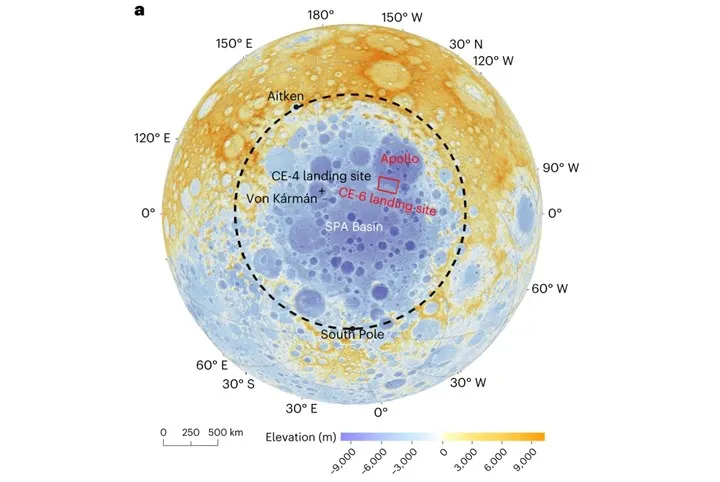China has taken a significant step in space exploration by launching the Chang’e-6 mission, aimed at collecting samples from the far side of the Moon for the first time in history. This mission, considered one of the most critical in China’s lunar exploration program, seeks to bring back samples of lunar soil and rock from a region that remains largely unexplored.
Chang’e-6 Mission and Its Landing Plan Chang’e-6 was successfully launched from the Wenchang Space Launch Site aboard a Long March 5 rocket. If everything goes according to plan, the mission will land on the far side of the Moon, collect around 2 kilograms of samples, and then return them to Earth. This marks the first attempt to gather samples from this unexplored lunar region, where only one other mission has successfully landed—the Chang’e-4 in 2019, also by China.
Why is the Far Side of the Moon Important? The Moon is tidally locked to Earth, meaning it rotates on its axis at the same rate it orbits Earth. This unique characteristic allows us to see only one side of the Moon from Earth, leaving the far side shrouded in mystery. The far side was first photographed in 1959 by the Soviet Union’s Lunar 3 spacecraft, but detailed exploration has been limited due to challenging terrain and communication issues.
The far side of the Moon is heavily cratered and lacks the flat, easily accessible areas found on the near side, complicating landing and exploration efforts. To overcome the communication barriers, China launched the Queqiao and Queqiao-2 relay satellites into lunar orbit to facilitate communication with missions like Chang’e-6.

The Chang’e-6 Mission’s Roadmap The Chang’e-6 mission consists of four components: a lunar orbiter, a lander, an ascent vehicle, and a return capsule. After separating from the rocket, the spacecraft is expected to reach lunar orbit within four to five days. The landing is planned for early June.
Once on the lunar surface, Chang’e-6 is expected to operate for two days, collecting and sealing samples in containers. The ascent vehicle will then launch these samples into lunar orbit, where they will be transferred to the return capsule and brought back to Earth. The entire journey, from launch to the samples’ return, is projected to take 53 days. The samples are scheduled to land in Mongolia, where they will be collected and studied by Chinese scientists. The collected materials are estimated to have a geological age of about 4 billion years.

A Step Towards Future Space Exploration The success of Chang’e-6 will be a major milestone in China’s space program, demonstrating the ability to collect samples from the Moon’s far side. This mission could open new avenues for understanding the Moon’s geology and history, while also laying the groundwork for future deep-space exploration. China’s ambitious move underscores the growing potential of space missions in uncovering the secrets of the universe and expanding our knowledge of distant celestial bodies.

